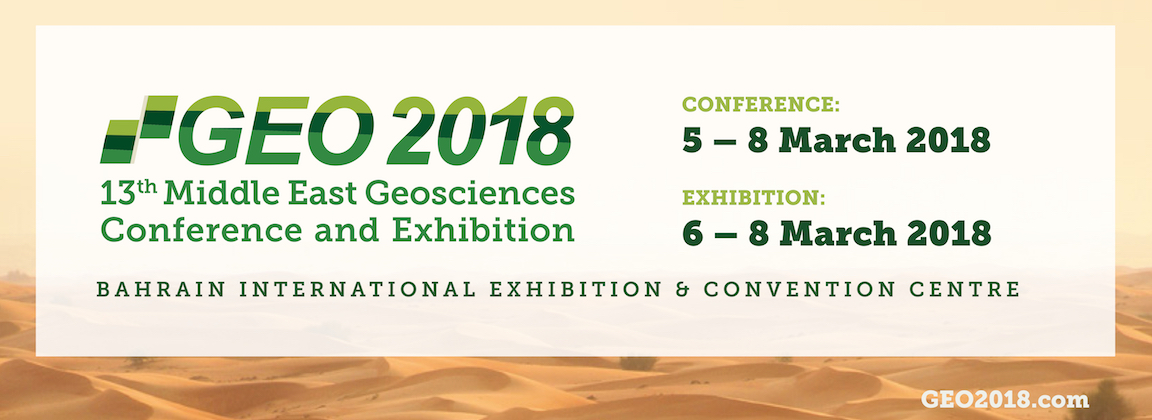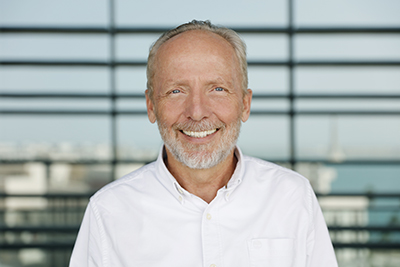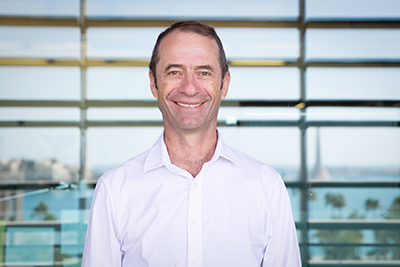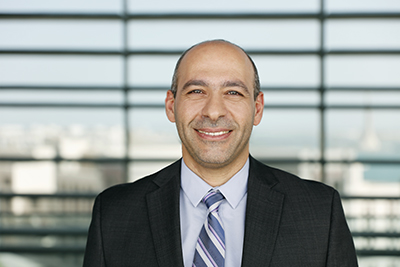.jpg?sfvrsn=39330263_0)
.jpg?sfvrsn=39330263_0)

26 February, 2018


A delegation of ANPERC faculty and students will attend the Geo2018 Conference and Exhibition, 5th to 8th March 2018 in Bahrain. Geo2018 is the Middle East's pre-eminent event for presenting and learning about new developments, applications, geology, geophysics and for networking with community peers and industry experts.
Be sure to visit the KAUST-ANPERC booth (024) at Geo2018 and get more information about our research and academic programs. Our faculty and students will be happy to answer your questions and to discuss the opportunities for learning and working at ANPERC and KAUST.
During Geo2018 separate from the main conference will be a conference focused on Young Professionals & Students (YPS) where students from ANPERC will be taking part in the poster session and in the Geo-Quiz and Challenge Bowl.
A special mention goes to ANPERC Senior Research Scientist Dr. Thomas Finkbeiner who, as a member of the EAGE Regional Advisory Council, was closely involved in organizing the Geo2018 Conference at the Executive Committee. Thank you Thomas!
Sessions by ANPERC faculty and students:
Tuesday March 6, 2018 
 Session 1, Innovations and Technology Applications in Reservoir Characterization: 09.15 - 09.35, Room 1, Ahmed Hassan
Session 1, Innovations and Technology Applications in Reservoir Characterization: 09.15 - 09.35, Room 1, Ahmed Hassan
New Approach to Aid Multi-Scale Imaging and Characterization of Heterogeneous Carbonate Rocks Using Epoxy-Pore Casts
Ahmed Hassan, Viswasanthi Chandra, Maxim Yutkin, Tadeusz W Patzek, King Abdullah University of Science and Technology
Abstract: Epoxy resin-pore casting is an extensively used method to study geological thin-sections and pore geometries in hydrocarbon reservoirs. Despite the significance and abundant usage of this process, currently there exists no standard or readily applicable methodology that can rapidly combine the virtues of digital rock physics and epoxy-pore casting. We propose a new multi-scale imaging approach that employs Confocal Laser Scanning Microscopy (CLSM) in conjunction with Scanning Electron Microscopy (SEM) to obtain high resolution 3D images of epoxy-pore casts of heterogeneous carbonate rocks. We first applied the proposed methodology to well-known carbonate samples with variable pore types and geometries, and then extended to rock samples from a carbonate outcrop stratigraphically analogous to the Arab-D reservoir in Saudi Arabia. We developed an in-house resin impregnation procedure for producing high quality fluorescent epoxy-pore casts. High resolution 2D and 3D images of the resulting epoxy pore-casts were obtained using SEM and CLSM. The high resolution CLSM images were then used for numerical simulations to estimate the rock petrophysical properties including porosity, permeability, pore size distributions, pore network geometry and connectivity. We compared these results with the standard petrophysical property measurements e.g., porosity and pore-size distribution obtained from mercury intrusion porosimetry. The various pore types identified from high resolution SEM and CLSM images of the epoxy-pore casts of the standard rock types, namely inter- and intra-granular microporosity, vuggy and moldic porosity, were corroborated with published studies. The 3D pore structures of the studied rock samples were hence effectively captured by the suggested epoxy-pore casting and multiscale imaging approach, qualitatively and quantitatively.
 Session 14 – Diagenesis and Reservoir Quality Prediction, Room 3, 15:55 – 16:15
Session 14 – Diagenesis and Reservoir Quality Prediction, Room 3, 15:55 – 16:15
Micro-Rhombic Calcite and Micro-Porosity in Early Cretaceous Reservoirs – The Role of Burial Diagenesis Driven by PlateTectonics 
Volker Vahrenkamp, Hussain Hoteit & Carlos Santamarina, King Abdullah University of Science and Technology
Abstract: Micro-porosity with pores smaller than 10 microns and pore throats smaller than 1 microns is volumetrically the most prominent porosity type in Early Cretaceous carbonate reservoirs of Arabia. A better understanding of the origin, distribution and properties of the micro-porosity is of the highest importance for hydrocarbon production with most of the remaining oil in the super giant reservoirs of the Middle East locked in it. The application of the new technique of clumped oxygen isotope thermometry has revealed that in Abu Dhabi micro-rhombic calcite, which hosts the micro-porosity formed at temperatures between 50 oC and 90 oC. This together with temperature gradients from basin modelling and detailed burial curves indicates recrystallization of pre-existing calcite minerals at depth of several hundred meters during burial diagenesis in the Late Cretaceous (Turonian to Campanian). This time period is characterized by the obduction of oceanic crust onto the eastern margin of the Arabian plate burying the Early Cretaceous strata to a depth of some 10km over an area extending 350 km by 100 km. Consequently, the limestone sequences at the plate margin lost all porosity and were compacted to about 80% of their original thickness. A fluid flow model has been created to investigate whether pore fluids expelled from compacting carbonates at the Eastern plate margin were instrumental in the whole-scale recrystallization to micro-rhombic calcite of the platform interior sediments which were not overridden by the oceanic plate. The model implies that fluids were squeezed from the compacting sequences and constrained to flow westwards and strata bound as upwards flow was prevented by overlying seals composed of shale sequences. A further drive for fluid flow may have been added by hydrothermal convection introduced by heat from the deep burial and hence increased fluid temperatures at the plate margin.
The overall aim is to better understand the processes and flow paths during burial diagenesis to unravel regional gradients in micro-porosity distribution and associated properties.
Wednesday March 7, 2018
 Session 6, Emerging Conventional Plays, Plenary Session 2: 10.30 - 12.00, Room 1, Tadeusz Patzek
Session 6, Emerging Conventional Plays, Plenary Session 2: 10.30 - 12.00, Room 1, Tadeusz Patzek

Unconventional Resources: Challenges and Opportunities: keynote speaker
Abstract: Unconventional resources are targeted for exploration and development around the globe, including the Middle East. With a relatively short cycle time and quick payout, the exploitation of these resources in mature markets like North America has revealed its commerciality. As a result of active exploration and appraisal campaigns over the last several years, a number of Middle East basins have been identified as potential emerging unconventional plays. | |||||
| These basins host the world’s largest conventional hydrocarbon resource and may have an order of magnitude higher of hydrocarbons in unconventional reservoirs waiting to be developed. However, in today’s market conditions, the global energy landscape outlines some key challenges for unconventional gas development. | |||||
| Building on the successful unconventional experience from North America, the panel session will share proven industry examples of best practices and strategies for unconventional gas development in today’s challenging market. With focus on resilience, agility and adaptability, the challenges facing these emerging plays can be transformed into opportunities. | |||||
In addition, data gathering strategies during the initial exploration phase will be discussed to provide insights on the economic benchmarks used to assess and rank such emerging plays. Ultimately, this information will provide national oil companies, international oil companies, and services companies with the knowledge needed to evaluate, exploit and accelerate the development of such resource plays.
|
 Session 32, Reservoir Geomechanics: 3:30 - 3:50, Room 4, Thomas Finkbeiner
Session 32, Reservoir Geomechanics: 3:30 - 3:50, Room 4, Thomas Finkbeiner

Petrophysical and Geomechanical Properties of Late Jurassic Carbonates Outcropping in Central Saudi Arabia: Correlation with Depositional Sequences and Diagenetic Overprints
Thomas Finkbeiner, Viswasanthi Chandra, Volker Vahrenkamp, King Abdullah University of Science and Technology
Abstract: Late Jurassic carbonats of the Jubaila Formation outcrop in an almost 800 km long escarpment in Central Saudi Arabia. Near Riyadh the formation is exposed along a 1.5 km road cut, which was previously scanned by Saudi Aramco using a high-resolution Lidar survey. Our group has drilled a 37m long core at a location 20 m behind the road cut to investigate the expression of the depositional facies in core, establish diagenesis and the associated paragenetic sequence, document naturally existing fractures and measure petrophysical and geomechanical properties of the rock. Detailed investigations of the facies successions confirm a previously reported shallow water depositional origin an cyclicity similar to that of the prolific Arab reservoirs in eastern Saudi Arabia. Early marine and burial diagenesis to a depth likely exceeding 1 km are indicated by grain micritization, cements, partial dolomitization and pressure solution. However, a reduced porosity and permeability compared to the equivalent oilfield sequences is attributed to a late phase meteoric diagenesis, which likeley affected the rock during uplift and exposure. Dual energy CT scans have been found useful for selecting representative rock type samples for further petrophysical studies and in providing 3D models of depositional and diagenetic fabric. Rock mechanical and physical analyses using triaxial tests, continuous scratch testing as well as ultrasonic measurements along the entire core interval provide insight into mechanical stratigraphy and layering that are correlated with lithostratigraphy and diagenetic intervals and are used to further constrain rock types. After characterization of their petrophysical properties through routine and special core analysis the representative rock types are to be utilized for core flood experiments.
Thursday March 8, 2018
 Session 45, Unconventional - Reservior Simulations and Economics: 13:35 - 13:55, Room 6, Hussein Hoteit
Session 45, Unconventional - Reservior Simulations and Economics: 13:35 - 13:55, Room 6, Hussein Hoteit

An Integrated Experimental Design Solution to Address Production Forecast Uncertainty in Unconventional Reservoirs
Hussein Hoteit, King Abdullah University of Science and Technology
Abstract:
YPS - ANPERC and Kaust students:

 Tuesday March 6, 2018 13:00 - 15:00: Geo-Quiz with team Kaustian Subsurface
Tuesday March 6, 2018 13:00 - 15:00: Geo-Quiz with team Kaustian Subsurface
Bora Yalcin, ANPERC
Abdullah Alali, Seismic Wave Analysis Group
E-poster session, 16:10, Student Pavillion: Bora Yalcin
Poster: The Difference between Total and Flow Contributing Fracture Porosity Resulting from Stress Assessment
Wednesday March 7, 2018, 10:30 - 12:30, SEG/DGS Middle East Challenge Bowl

 Ahmad Ramdani, ANPERC
Ahmad Ramdani, ANPERC
Abdullah Alali, Seismic Wave Analysis Group